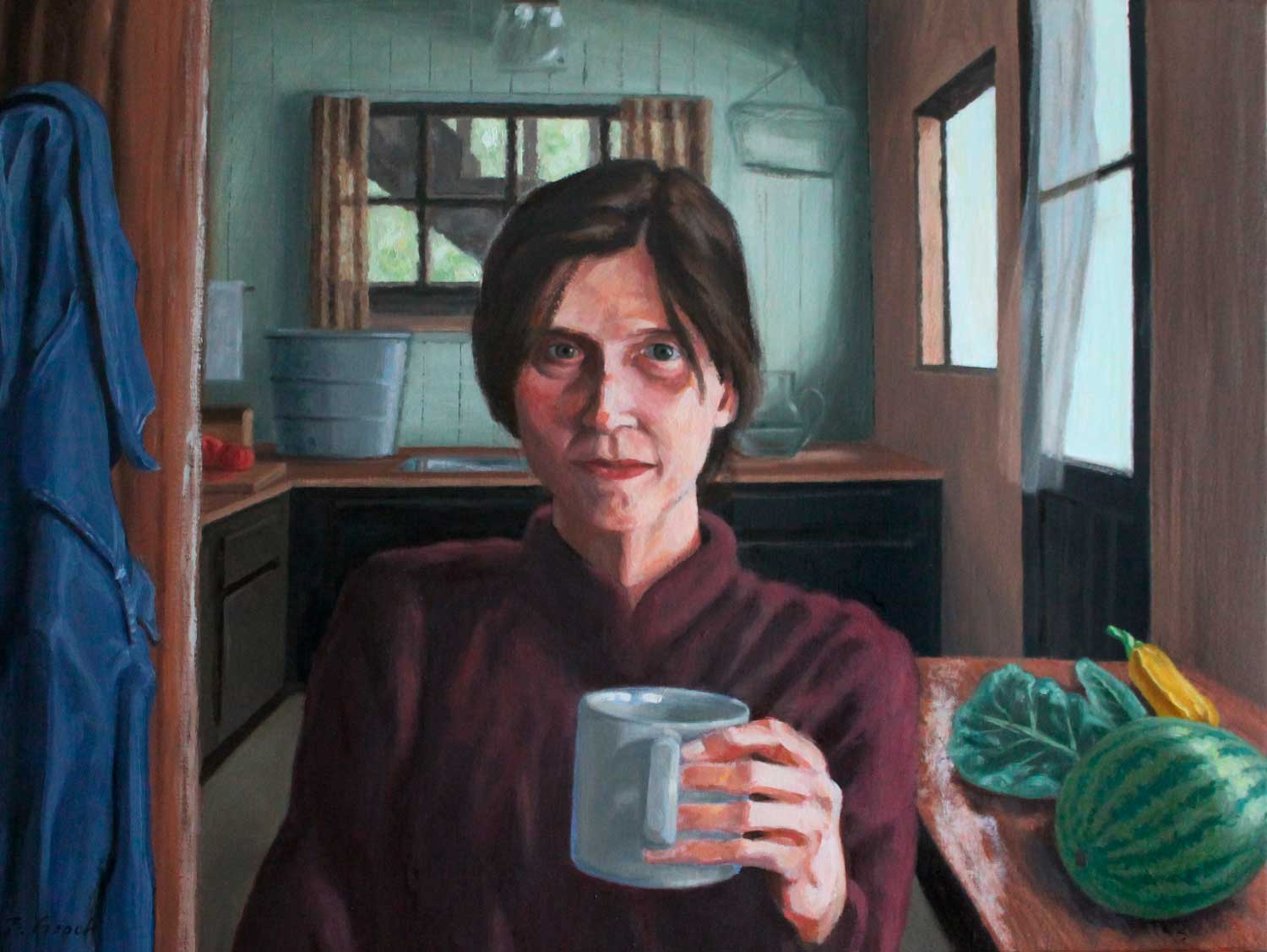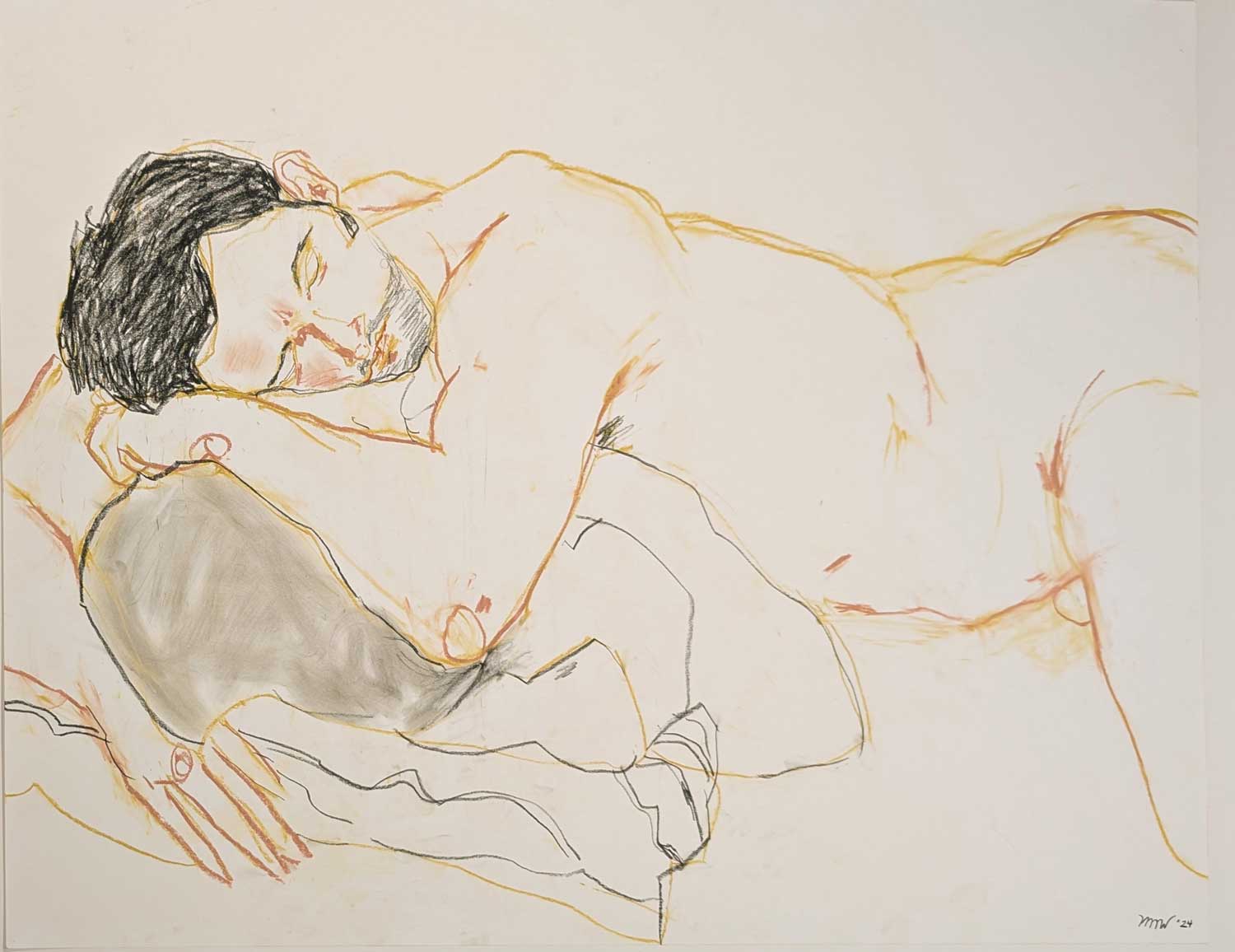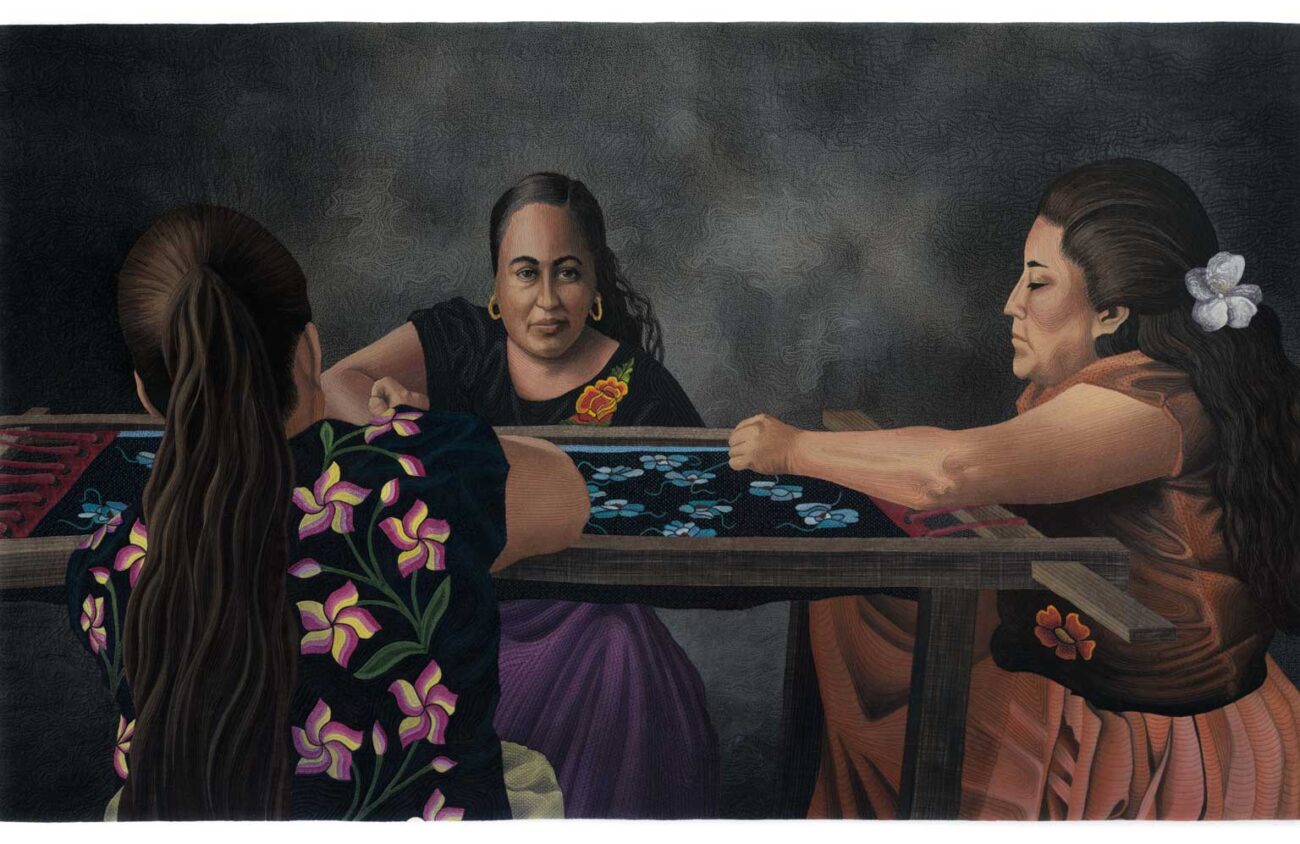Seen: A Regional Figurative Exhibit at Maude Kerns Art Center, from Feb. 21 to March 21, was conceived by newly promoted MKAC Director of Exhibits Liberty Rossel. After working as exhibits coordinator at the art center for three years, a position she started immediately after graduating with a degree in fine art from the University of Oregon, Rossel decided it was time to bring back a show to MKAC that featured the figure.
For her, the question then became how could a figurative exhibit tell a story, and which one should it tell? She sent out a regional call looking for artists who depicted figures not traditionally represented. The responses came from all over Oregon, particularly the Willamette Valley, including Eugene and Springfield, Portland, McMinnville and Oakridge.
Seen includes 54 artists who work in a variety of mediums: paintings, drawings, photographs, sculptures, textiles, ceramics and installations. As usually happens in a themed group show of this magnitude, some of the entries are more tightly connected to the intended narrative than others. Generally, though, this is an eclectic collection of art, different from each other as a show about different views should be.
Linda Anderson’s “Velvet Flowers” is made with textiles and paint. It depicts three women making a quilt. Two of them are engrossed in their work while a third looks up, aware of our presence.
Anderson has a studio in Eugene but has traveled in Mexico throughout her life. “The thread” that connects her art, she says, is “the universality of the human experience.”

Brad Gooch’s “Laura’s Cabin” is an oil painting that depicts its subject, Laura, in the privacy of her own home. Gooch told Rossel, “‘Laura’s Cabin’ is a portrait of my partner in our Breitenbush cabin, which burned up in 2020.”
The 2020 Oregon fires left many devastated, as did the recent fires in Los Angeles. The victims’ loss was news as long as the fires raged. Then their tragedy became less seen once the fires were extinguished.
“The painting is of sentimental value to us,” Gooch says about the picture of Laura’s lost home.
I stopped in MKAC the day artists delivered their works for the show and met Michael Whitenack who was bringing in “When the Stars Fell From the Sky.” His artwork is a sculptural multimedia portrait of a Native American man set against a sky of shooting stars.
The title references the 1833 Leonid Meteor Storm, when thousands of meteors were seen falling per hour across the United States.
Whitenack, who worked at the Jordan Schnitzer Museum of Art for 20 years and identifies in part as Native American, points out the meteor storm was viewed by some as a sign the world was ending. His work likens that event to the end of life as experienced by Indigenous cultures around that same time in U.S. history.
Marsha Shankman (artist’s name, Marsha Maverick Wells) has been publicity coordinator at MKAC for about 30 years. She earned degrees in art before moving to Eugene and has continued as a practicing artist throughout her life, raising her family, taking advantage of the open studios at the art center.
Open studios at MKAC are classes without teachers that offer artists a model to work from for three hours at a time. Shankman has a take on being seen that empathizes with the model. Typically, a model is referred to anonymously as “a nude” or “the figure.” But Shankman has always felt connected to the person she’s trying to represent, aware of the story they tell with their posture. And because there is no instructor in open studios, the models assume their own poses.
In other words, they tell their own stories.

Figure drawing is often practiced to teach basic techniques to students. But models are not just figures, they are people, Shankman says. “I include the model’s name in the title.” Her work in the show is the lovely and sensitively drawn pastel titled “Dylan in Repose.”
Rossel may not regularly paint or draw, but she still practices art at work. Her art, she says, is designing exhibits. And her interest in designing revolves around storytelling, whether it’s a color story or a narrative that speaks to a content theme like this one about diverse views.
How does she feel then about the story currently playing out in the news relative to an Executive Order issued by the White House on Jan. 20, which seems in opposition to the theme of Seen? Specifically, the Presidential Action reads (in capital letters) “ENDING RADICAL AND WASTEFUL GOVERNMENT DEI PROGRAMS AND PREFERENCING.”
“We are not changing our values,” she says in response. Referring to the art center, which is turning 75 years old this year, “… we are still here.”
